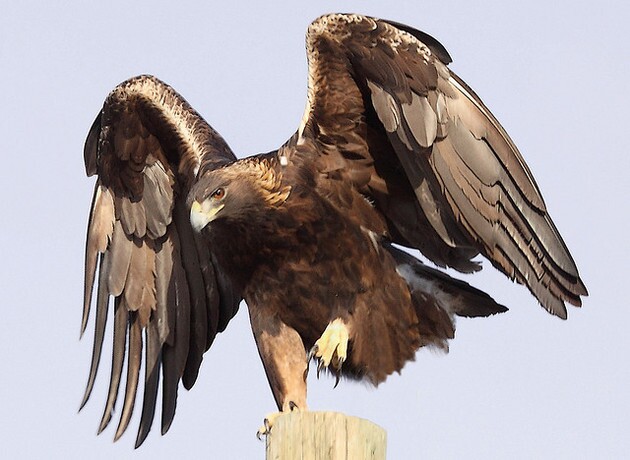Another Eagle Death at Nevada Wind Project

A wind energy facility in eastern Nevada killed its second golden eagle in January, and environmentalists are demanding action from the federal government to prevent more eagle deaths there.
Pattern Energy's 152-megawatt Spring Valley Wind project, which occupies about 7,700 acres of public land in White Pine County near Ely, Nevada, attracted attention two years ago when an eagle died there in February 2013. Another eagle was killed at the site in early February of this year.
Despite Pattern's lacking a "take permit" that would have allowed eagle deaths at Spring Valley under the Bald and Golden Eagle Protection Act (BGEPA), the federal government's only response to that fatality was to conduct an eagle survey. But now that a second eagle has died at Spring Valley with no eagle take permit, wildlife advocates are urging that the Bureau of Land Management and the U.S. Fish and Wildlife Service take steps to address the issue.
Though golden eagles are not listed under the U.S. Endangered Species Act, they are protected under both BGEPA and the Migratory Bird Treaty Act. Under BGEPA, a second offense for injuring or killing golden eagles can carry with it a sentence of two years in prison and fines of up to $10,000.
In a letter to BLM officials from Kristin Reuther of the group Western Watersheds Project, she urged the agency to disclose what its response would be to the second death. In the letter, which Reuther provided to Rewire on Wednesday, she points out that the wind facility's Avian and Bat Protection Plan (ABPP) requires that mitigation measures be put in place if a certain threshold number of eagle is killed.
"The governing ABPP provides that... BLM will respond with appropriate mitigation when 'species-specific thresholds' have been exceeded," wrote Reuther, "which is now the case for golden eagles."
"[T]he only mitigation done after the first golden eagle kill was a survey," Reuther added. "We expect a far more robust response to this second unauthorized kill."
According to an email from Pattern Energy obtained by Rewire, the unfortunate eagle likely died on February 8, with the cause of death assumed to be "turbine strike."
Among Pattern Energy's other wind project holdings is the 265-megawatt Ocotillo Express Wind project in Imperial County.
For the record: This post has been edited. An earlier version of the post cited an incorrect date for the eagle's death, which was based on preliminary information available to us.





